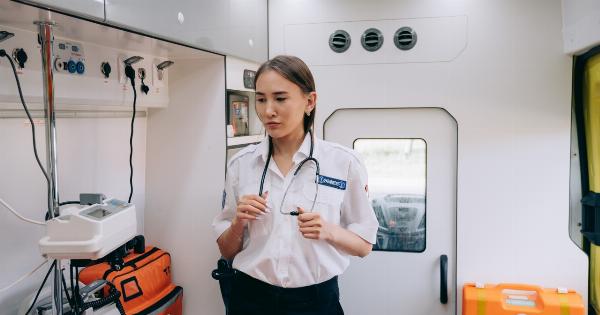Getting a tattoo is a popular way for individuals to express their identity, showcase their creativity, or commemorate a significant event or person.
While tattoos have become increasingly mainstream, it’s important to understand that there may be risks and complications associated with the process and the aftercare. In this article, we will explore the potential risks involved in getting a tattoo, as well as the complications that can arise during the healing process.
Infection: A Common Concern
One of the most common risks associated with getting a tattoo is the possibility of developing an infection. When the skin is punctured, bacteria can enter the wound and cause an infection.
Tattoo artists take precautions by sterilizing their equipment and using single-use needles, but there is still a risk, especially if proper aftercare is not followed.
If a tattoo becomes infected, you may experience symptoms such as redness, swelling, pain, or discharge from the tattooed area. In severe cases, an infection can lead to abscess formation or the spread of bacteria to other parts of the body.
It is crucial to seek medical attention if you suspect your tattoo is infected.
The Allergy Factor
While rare, some individuals may have an allergic reaction to the ink used in their tattoo. Tattoo pigments can contain various ingredients, such as metals, that can trigger an allergic response in susceptible individuals.
Allergic reactions to tattoos can manifest as itching, redness, bumps, or even blistering around the tattooed area.
If you experience any signs of an allergic reaction, it is important to consult with a healthcare professional or a dermatologist. They can recommend appropriate treatment options or, in severe cases, discuss potential tattoo removal.
Scarring and Keloids
Scarring is another potential complication that can result from getting a tattoo. The extent of scarring can vary depending on various factors, such as individual healing capacity and tattoo placement.
In some cases, the tattoo may heal with minimal scarring, while in others, the scar tissue may be more prominent.
Certain individuals may be prone to developing keloids, which are raised, thickened scars. Keloid formation is an overgrowth of scar tissue that extends beyond the boundaries of the original tattoo.
Keloids can be itchy, tender, and aesthetically undesirable. If you are prone to keloid formation, it is important to discuss this with your tattoo artist and consider the potential risks before proceeding with a tattoo.
Delayed Healing and Incomplete Pigmentation
While most tattoos heal within a few weeks, some individuals may experience delayed healing or incomplete pigmentation.
Factors such as the size of the tattoo, the depth of the needle penetration, and individual healing capabilities can affect the healing process. It is crucial to follow proper aftercare instructions provided by your tattoo artist to promote optimal healing.
In some cases, the desired pigmentation may not be achieved, resulting in an uneven or patchy tattoo. This can be a disappointment, particularly if the tattoo holds personal significance.
It’s essential to have realistic expectations and communicate openly with your chosen tattoo artist about your desired outcome.
Tattoo Removal Considerations
In situations where a tattoo becomes an unwanted or regrettable choice, the process of tattoo removal must be considered.
Tattoo removal techniques have come a long way, but it’s important to note that they also come with potential risks and complications.
Common tattoo removal methods include laser removal, surgical excision, and dermabrasion. Each method has its own set of risks, such as scarring, pigmentation changes, or incomplete tattoo removal.
Consulting with a qualified dermatologist or tattoo removal specialist is crucial to make an informed decision and minimize potential complications.
Prevention and Aftercare Measures
While there are risks and complications associated with getting a tattoo, there are also steps you can take to minimize these potential issues.
Choosing a reputable and professional tattoo artist is the first step in reducing risks. Make sure they operate in a clean and sterile environment, use disposable needles and ink cups, and follow proper sanitation protocols.
Take the time to research different artists, review their portfolios, and speak with previous clients.
Following proper aftercare instructions is equally crucial. Your tattoo artist will provide you with a detailed aftercare plan, including cleaning, moisturizing, and avoiding certain activities during the healing process.
Paying attention to these instructions can significantly decrease the risk of infection and other complications.
Considerations for Specific Population Groups
While tattoos can be a personal choice for individuals from all walks of life, certain population groups need to be particularly cautious.
Pregnant individuals should avoid getting tattoos during pregnancy. The process involves needles, potential exposure to viruses or bacteria, and the use of chemicals that may not be safe for the developing fetus.
It is advisable to wait until after pregnancy and breastfeeding to get a tattoo.
People with pre-existing medical conditions, such as diabetes or compromised immune systems, may have a higher risk of complications.
It is crucial to consult with a healthcare professional before getting a tattoo to evaluate any potential risks and receive appropriate guidance.
Conclusion
Getting a tattoo can be an exciting and meaningful experience, but it is essential to be aware of the potential risks and complications that may arise.
Infection, allergic reactions, scarring, and delayed healing are important considerations to keep in mind before committing to body art. By understanding these risks and taking proper preventive measures, you can make an informed decision and ensure a safer tattooing experience.






























